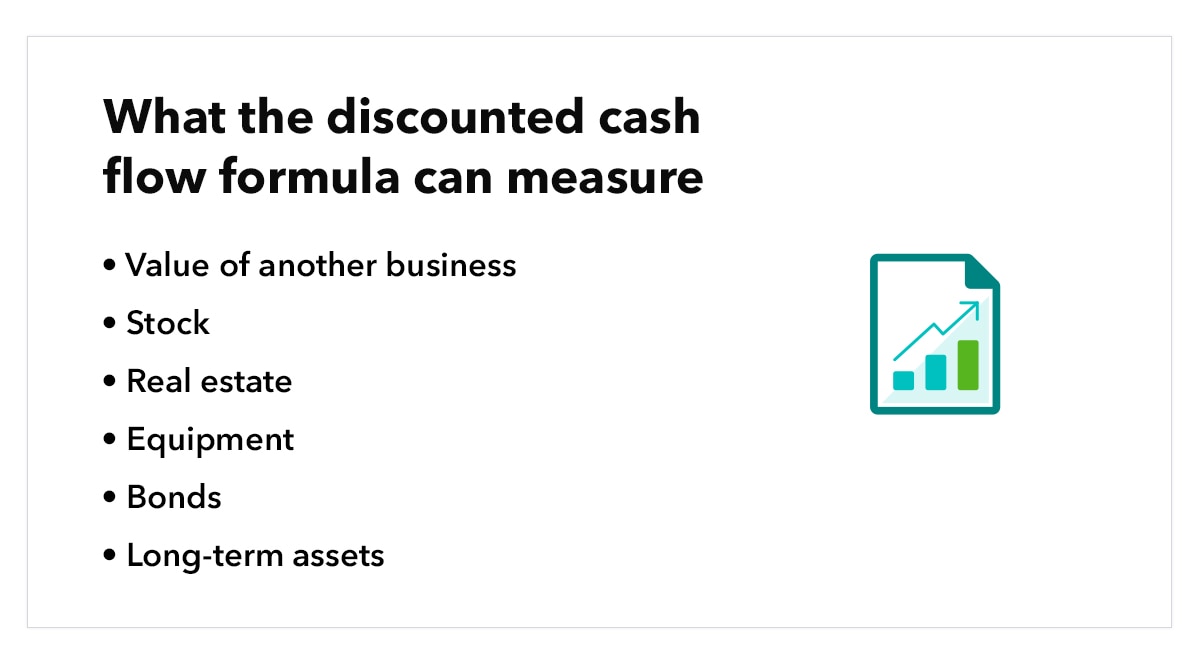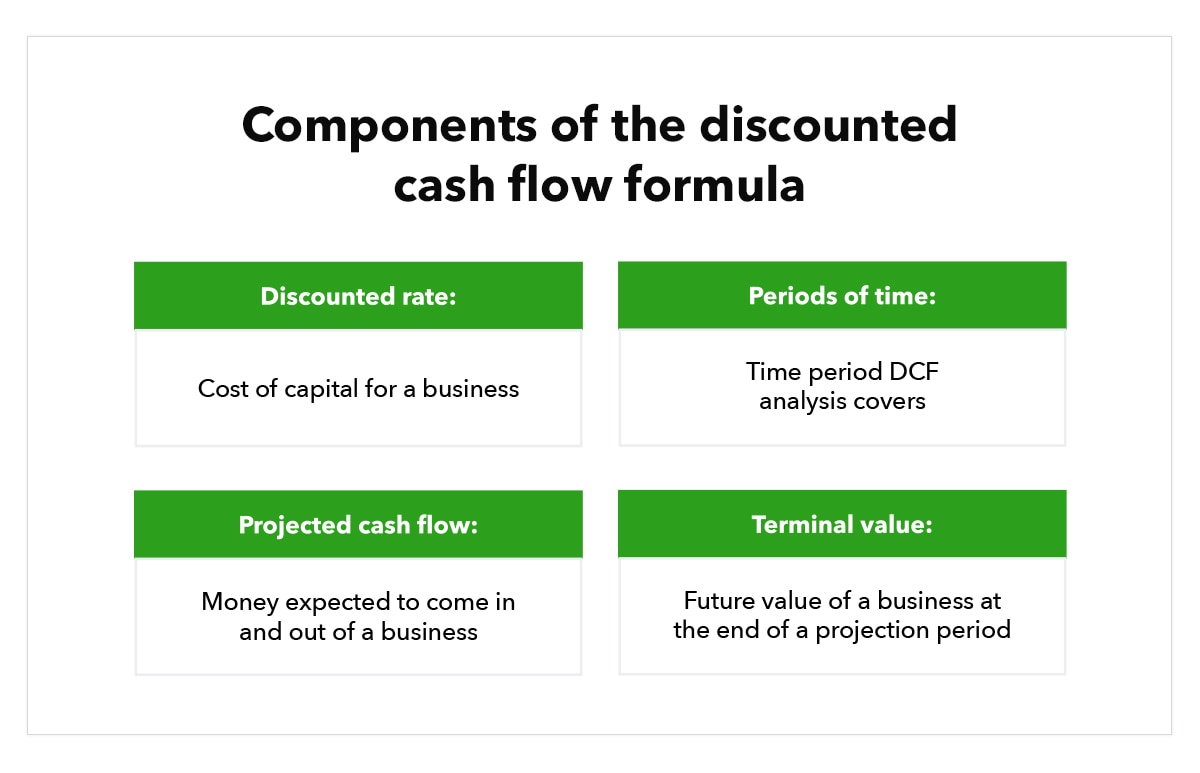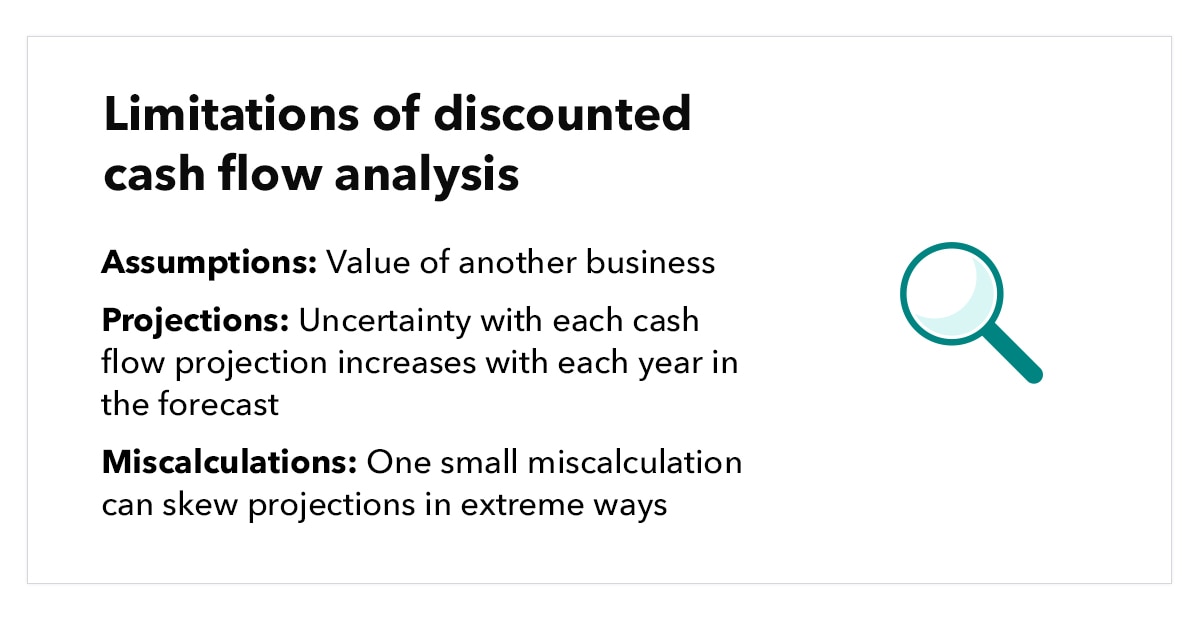Discounted cash flow formula example
Now that we know the DCF formula, let’s put it into practice with a hypothetical example. Let’s say you look at your business’s balance sheet. You find that the business brings in $400,000 each year in free cash flows and has a steady rate of 5% each year.
To calculate your cash flow (CF), you’ll multiply $400,000 by 0.05 to get 5% of $400,000, which gives you $20,000. You’ll then add $20,000 to $400,000 to get $420,000, which is your cash flow (CF2) for the next year. To calculate CF3, you will then find 5% of $420,000, which is $441,000.
Depending on how far you want to forecast, you can continue repeating the cash flow calculation. However, for this example, we’ll stick to forecasting three years in advance. Now that your cash flow, you can begin calculating the company's value with the DCF formula.
So far, we have three calculations:
- CF1: $400,000
- CF2: $420,000
- CF3: $441,000
Now, let’s say you have a target compounded rate of return of 15% per year, which will represent “r” in the DCF formula.
Plug this into the DCF equation:
- DCF = ($400,000 / (1+0.15)1) + ($420,000 / (1+0.15)2) + ($441,000 / (1+0.15)3)
- DCF = $347,826 + $317,580 + $289,965
- DCF = $955,371
In our example, your business’s present value would be worth $955,371 over a three-year period. The DCF equation translates future cash flows into how much they’re valued to you today. This is based on the compounded rate of return (15% in this example) you think you can achieve with your money today.
In this case, the growth rate (15%) is higher than your company’s cash flow (5%). A higher growth rate means the discounted versions of your future cash flows will depreciate each year until they bottom out at zero.
Whether you’re buying real estate, shares of stock, an entire business, or trying to find the required rate of return for a project, the DCF formula can help.










